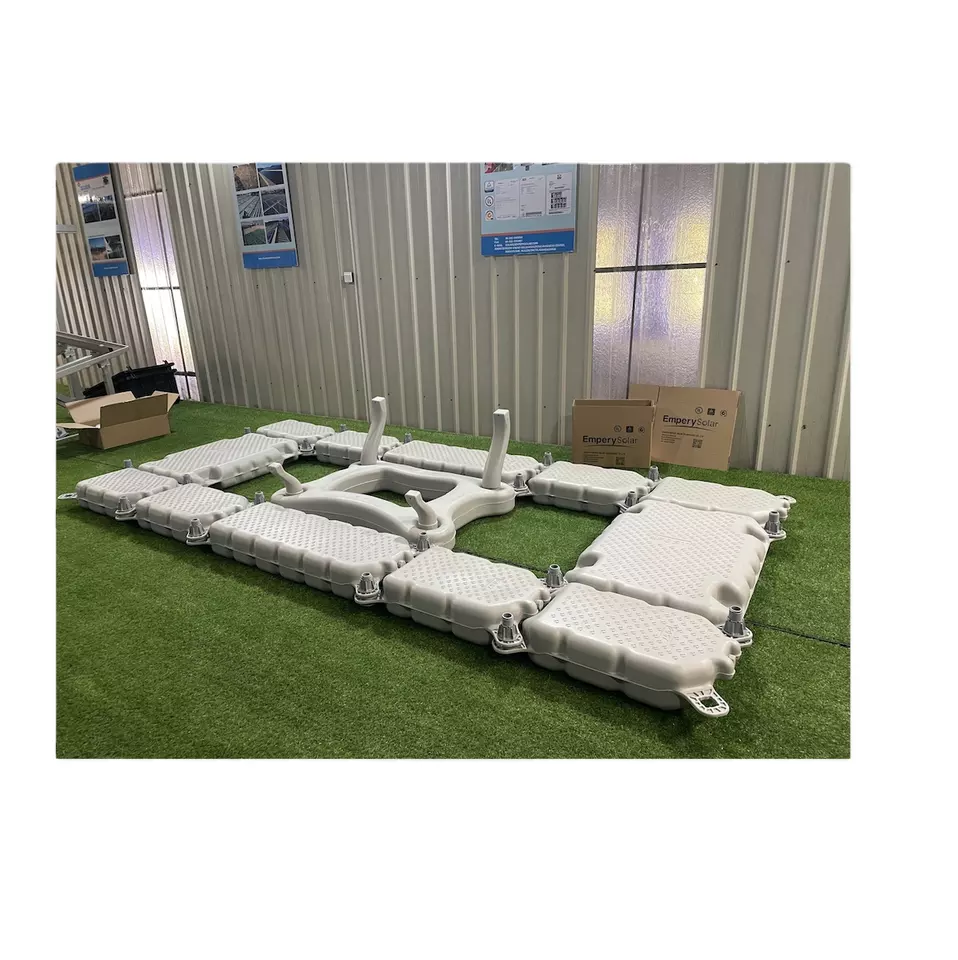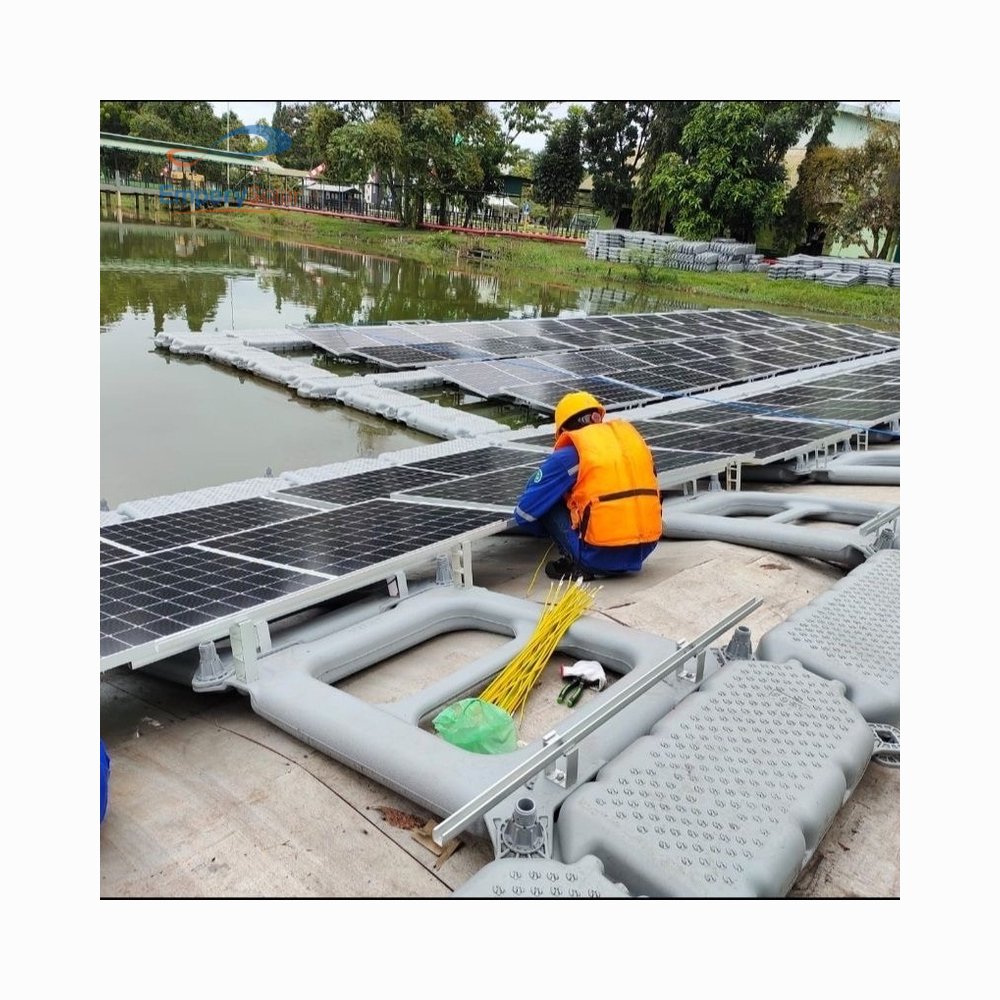As the world shifts towards renewable energy, innovative solutions emerge to harness natural resources. One such solution is the Floating Solar Mounting System. This technology utilizes water surfaces, such as lakes and reservoirs, to install solar panels. By combining solar energy with aquatic environments, this approach offers numerous benefits. In this article, we will explore how Floating Solar Mounting Systems work, their advantages, and their role in the future of renewable energy.
What Is a Floating Solar Mounting System?
A Floating Solar Mounting System consists of solar panels mounted on floating platforms. These platforms are anchored to the water surface, ensuring stability and security. The system includes various components, such as solar panels, inverters, and mooring systems.
Floating solar installations can be designed for different water bodies. They can be deployed on reservoirs, lakes, or even coastal areas. This versatility makes them an attractive option for regions with limited land space.
In many cases, Floating Solar Mounting Systems can be cheaper to install than traditional ground-mounted systems. The need for extensive land preparation is minimized, leading to cost savings.

How Do Floating Solar Mounting System Work?
Floating Solar Mounting Systems operate similarly to traditional solar installations. Solar panels convert sunlight into electricity through photovoltaic cells. The electricity generated is then fed into the grid or used locally.
The floating platforms are engineered to withstand environmental conditions. They are designed to resist waves, wind, and weather changes. Additionally, these systems often include tracking technology to optimize sunlight exposure. This maximizes energy production throughout the day.
Challenges of Floating Solar Mounting Systems
While Floating Solar Mounting System offers numerous advantages, they also face certain challenges. Understanding these challenges is essential for successful implementation.
- Regulatory Hurdles: Obtaining permits for floating solar installations can be complex. Regulations vary by region and can impact project timelines. Navigating these regulations requires careful planning.
- Maintenance and Access: Maintaining floating solar installations can be more challenging than land-based systems. Accessing the panels for cleaning and repairs requires specialized equipment and planning.
- Environmental Impact Assessments: Environmental assessments are necessary before deployment. Projects must consider the potential impacts on local ecosystems and water quality.
- Initial Costs: Although installation costs can be lower, initial investment may still be significant. Funding and financing options can vary, affecting project feasibility.

Global Adoption of Floating Solar Mounting Systems
The adoption of Floating Solar Mounting System is growing worldwide. Several countries have embraced this technology, showcasing its potential.
In China, floating solar projects have gained significant traction. The country has installed some of the largest floating solar farms globally. These projects contribute to renewable energy goals while utilizing underused water bodies.
In Japan, floating solar installations have become a viable solution in areas with limited land availability. These systems complement existing renewable energy efforts and help diversify the energy mix.
Countries like India and the United States are also exploring floating solar technology. The potential for harnessing solar energy on water surfaces is attracting investment and innovation.
Case Studies of Successful Floating Solar Mounting Systems
Several successful case studies highlight the effectiveness of Floating Solar Mounting System. These examples demonstrate the technology’s potential in different environments.
One notable project is the 40 MW floating solar farm in China’s Huainan City. This installation showcases the capability of floating solar to generate significant energy. It also highlights the efficient use of previously mined land.
Another example is the floating solar project in the Netherlands. This system utilizes water bodies in agricultural areas. It helps farmers produce renewable energy while maintaining agricultural activities.
These projects exemplify how Floating Solar Mounting Systems can meet energy demands sustainably while addressing land use challenges.

Future Trends in Floating Solar Technology
The future of Floating Solar Mounting System looks promising. Several trends are shaping the development and deployment of this technology.
- Technological Advancements: Innovations in solar panel efficiency and floating platform designs will enhance performance. New materials can improve durability and reduce costs.
- Hybrid Systems: Combining floating solar with other renewable technologies is gaining attention. Hybrid systems can integrate wind turbines or energy storage solutions. This diversification increases energy reliability and efficiency.
- Increased Investment: As awareness of renewable energy grows, investments in floating solar technology will likely increase. Governments and private entities are recognizing the potential benefits.
- Collaboration and Partnerships: Collaboration between governments, NGOs, and private companies will drive innovation. Partnerships can facilitate knowledge sharing and accelerate project implementation.
Conclusion
Floating Solar Mounting System represent a significant advancement in renewable energy technology. They offer a sustainable solution for harnessing solar power while minimizing land use. The benefits of these systems are numerous, from increased energy production to environmental improvements.
As global adoption continues to grow, the potential of Floating Solar Mounting Systems will expand. With technological advancements and increased investment, these systems can play a crucial role in the transition to a sustainable energy future. Embracing this innovative technology will be essential for meeting the world’s energy demands while protecting the environment.
